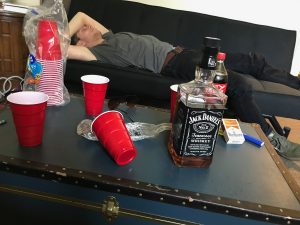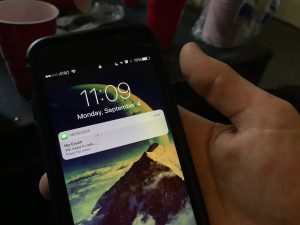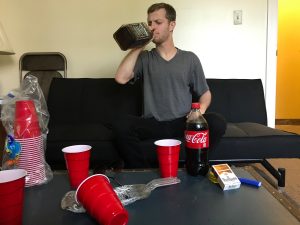The F-Word documents something so obvious but so subtly that it is brilliant. They follow a gay couple. Now I know it is obvious. No duh they are gay they are two girls who live together, but they barely ever talk about it. They reference it through animation and quick interjections, but rarely do they ever talk about it. The most attention they give the topic is at the beginning of the last episode where they talk about the law changing about same sex couple adopting a baby. The few references is the brilliance of the film, because it breaks down the notion of the nuclear family. The nuclear family is a wealthy white suburban family. For more of a visual: they are the families that own golden retrievers and matching fall sweaters. Nicole and Kristan are nothing like a nuclear family; they are gay.
This documentary however portrays them as a nuclear family. They show their home and stable and sound life style. They show their dog, their kitchen, their scouter, and their friends. By showing their life in a normal way they are normalizing something that is so distant and different. They are making them a contemporary nuclear family. This point is driven home by attaching their relationship to an understandable emotion love. They show their search for the love of a child, which is something a nuclear family can sympathize with.
The attack on the nuclear family is expanded by showing inner racial families and other semi nuclear families. For example Jillian and Scott are shown together with two kids. They are a very wealthy couple, but there is something unique about their family; Jill and Scott are white, but their children are black. This adds another layer to the new contemporary family, because it normalizes yet another different family. This film even attacks gender roles in the family in subtle ways too. In the nuclear family, the dad is usually the voice of authority and the bread winner in the family. But in the contemporary nuclear family the woman is the power figure. The film says this in a subtle way by first introducing Scott as “Jillian’s husband.” This is introduction implies that Jillian is more important than him. The F-Word attacks nuclear families in a very subtle way by normalizing different families. Hopefully more films like this one will be made.





